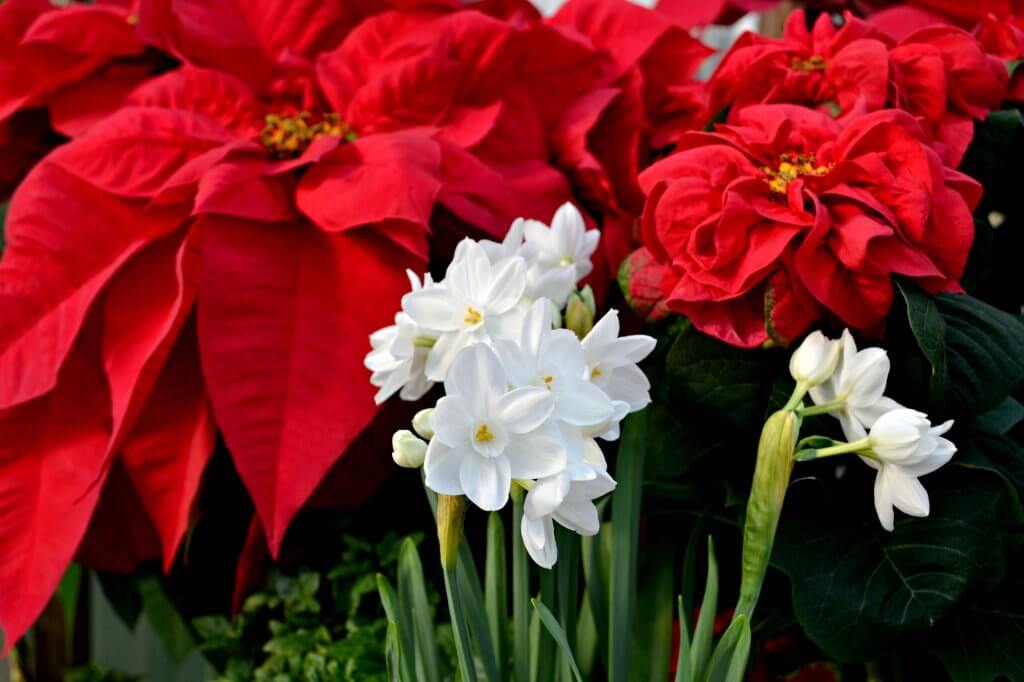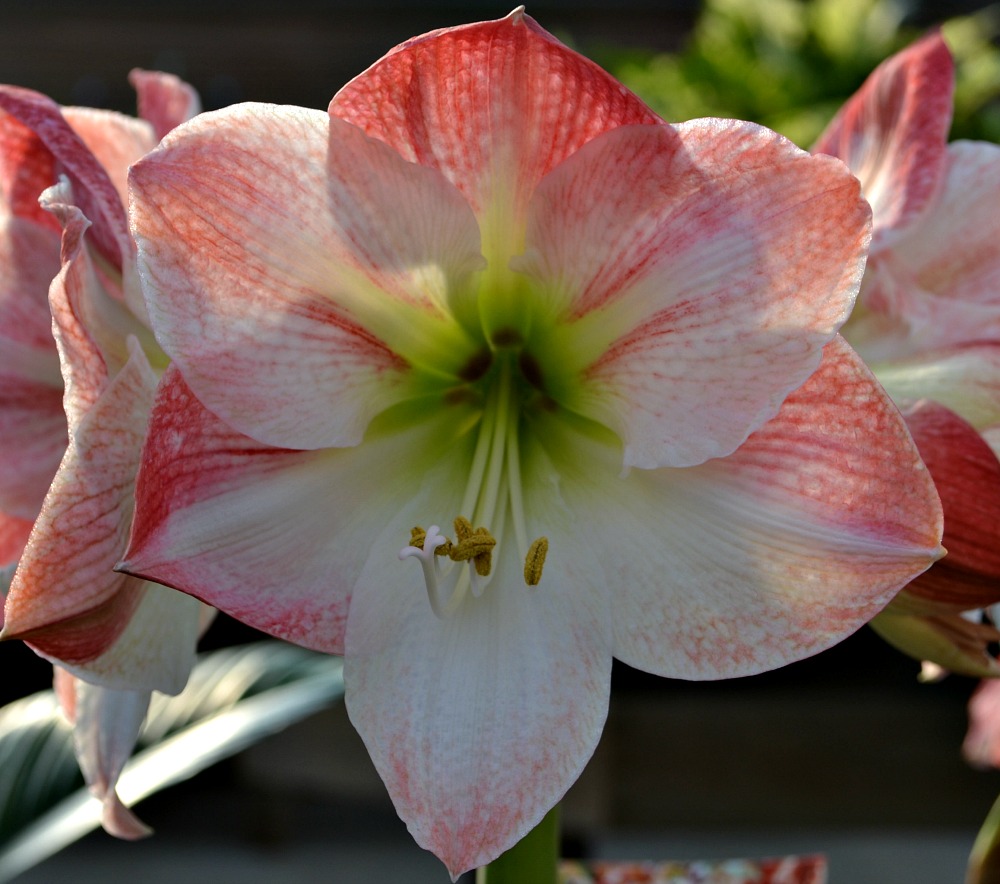Forcing Bulbs Indoor
Forcing bulbs in water is the perfect way to bring spring color into your winter home. Forcing is defined as coaxing bulbs to bloom out of season by recreating their growing season indoors. Although all bulbs can be forced to grow inside, only a few respond well to conditions without soil. Hyacinth are famous for their ability to grow in water, but Paperwhites can also be grown indoors without soil.
Many people don’t realize that there are really only two types of bulbs for indoor growing: those you need to pre-chill and those you don’t.
Bulbs That Do Not Need Pre-Chilling
In this category are amaryllis and the tropical narcissus varieties, such as paperwhites, Grand Soleil D’Or and Chinese Sacred Lily. These zone 8 to 9 bulbs have never known winter, so don’t expect a cooling period. You can find all these varieties at Fairview.

Forcing Paperwhites
The easiest of all bulbs to force, paperwhites require no chilling period.
- Select Quality Bulbs:
- Choose firm, healthy paperwhite bulbs.
- Paperwhites don’t require a chilling period like some bulbs, making them easy to force.
- Container and Planting:
- Use a shallow container without drainage holes.
- Plant the bulbs close together, almost touching, in a layer of stones or pebbles.
- Add water until it reaches just below the base of the bulbs.
- Place in a Cool Location Initially:
- For the first week, place the container in a cool, dark location (around 50°F or 10°C) to encourage root development.
- Move to a Bright Location:
- After roots have developed, move the container to a bright, indirect light location.
- Water Level:
- Maintain the water level just below the base of the bulbs.
- Avoid submerging the bulbs in water to prevent rot.
- Support (Optional):
- If the paperwhite stems become tall and start to lean, you can support them with stakes or decorative twigs.
- Blooming Time:
- Paperwhites typically bloom within 4-6 weeks after planting.
You’ll need water, gravel and a two to four inch deep glass dish or container that is wide enough to hold several bulbs. Make sure your container does not have a drain hole! First, fill the container halfway with pebbles. Then, place the bulbs close together, but not touching, on the gravel with the pointed side up. Add more pebbles to cover the bottom third of the bulbs. Finally, add water until the surface is just below the bottom of the bulbs.
Keep the bulbs in a dark, cool room until roots form. Make sure to check the water level often. Once you have a good root system in place, you can move your paperwhite bulbs to a sunny location. Expect to see blooms in three to five weeks.
Forcing Amaryllis
Why do so many people enjoy growing Amaryllis indoors? First, they are an easy bulb to grow. Second, they have big, bright, trumpet shaped blooms cheering up the indoor winter scene. And, third, many people want to grow something during the long winter.
- Choose the Right Bulbs:
- Purchase large, healthy amaryllis bulbs.
- Look for bulbs with firm, solid texture and no signs of rot or damage.
- Select a Suitable Container:
- Use a pot with drainage holes to prevent waterlogged soil.
- A pot that is 1-2 inches larger in diameter than the bulb is ideal.
- Planting:
- Fill the pot with well-draining potting mix.
- Plant the bulb, leaving the top third exposed.
- Water the soil thoroughly after planting.
- Provide Adequate Light:
- Place the pot in a bright, sunny location.
- Amaryllis prefers indirect sunlight.
- Watering:
- Keep the soil consistently moist but not soggy.
- Allow the top inch of soil to dry out before watering again.
- Temperature:
- Maintain a temperature between 65-75°F (18-24°C) for optimal growth.
- Staking (Optional):
- As the amaryllis grows, it may benefit from staking to support the tall flower stalk.
Here at Fairview, we carry loose Amaryllis bulbs in various colors as well as gift boxed Amaryllis that comes with the bulb, a pot and planting medium.

Planting a New Amaryllis Bulb
Before planting, place the bulb and its dangling roots in lukewarm water for a few hours. Choose a container slightly larger than the diameter of the bulb. Amaryllis will grow tall so add gravel to the bottom of the container to help prevent it from tipping over (as well as to help improve drainage!). Cover the bulb to the neck with nutritious potting soil or compost. Press the soil firmly around the bulb. Don’t overfill the pot; leave enough room for watering. In the first few weeks, water sparingly. After the leaves and bud develop, water more frequently. Direct sunlight and warmer temperatures encourage proper growth. Lower light and temperatures results in taller stems, whereas greater light and temperatures promote shorter stems. Amaryllis generally bloom in six to eight weeks after planting; the flowers last about 2 weeks.
Cut the stem close to the bulb after the flower fades. The long thin leaves will continue to grow. Once the weather warms up, the plant can be moved outdoors. In mid to late summer, stop watering and let the leaves die back. Before the first frost, bring the pot back inside and place in a cool dark place for eight to twelve weeks to simulate dormancy. Bring the bulb back to room temperature, resume watering, and its flowering cycle will begin again.
Forcing Hyacinths
You can force Hyacinths in a container with potting soil or by simply placing them in a glass jar with pebbles and water. Particularly attractive are traditional forcing glasses, which are hourglass-shaped so the bulb sits on top and only its roots are in the water. These are available here atFairview. The most important step in forcing hyacinths is to give the bulbs the required cooling period they need to grow roots.; they need about twelve to fourteen weeks at about forty degrees Fahrenheit. You can put them in a garage, storage building or in the vegetable drawer of your refrigerator. Just don’t store them in the same drawer you keep ripening fruit or vegetables which give off ethylene gas which can harm bulbs! If you start your bulbs at the beginning of October you can bring them out of the cold at the beginning of January and have them in bloom three weeks later.

So, you can have beautiful blooms year round with a little know-how! For questions or bulb selection, stop byFairview; we’re waiting to help you!
Happy Indoor Gardening!
Cindy K.
FairviewGreenhouses & GardenCenter




